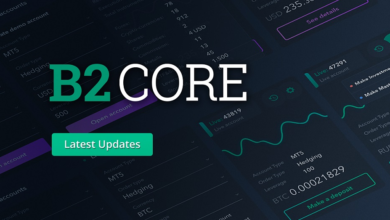The Benefits of High Forex Market Liquidity

image source: b2prime.com
Foreign exchange (FX) is the largest capital market regarding the volume and the number of individual and institutional traders involved. An increase in fx liquidity is the primary benefit of a more active trading community in any capital market. The term “liquidity” refers to an investment’s ease of conversion into cash. Foreign exchange liquidity allows for this instantaneous conversion, as a spot transaction can be converted into cash in as little as two working days.
A market with a competitive bid-to-offer trading spread and the capacity to absorb orders with enormous transaction volumes without significantly changing the market in either direction is highly liquid, the desired quality.
Currency Pair:
To be “liquid” in the foreign exchange market means a currency pair can be purchased or sold at any time. Trading the major currency pairings provides access to a very liquid market. However, your ability to enter or exit a transaction (currency pair) is contingent on the liquidity provider by financial institutions.
Margin Requirement:
In addition, the margin requirement for trading stocks is 50% of the stock’s value, while the margin requirement for trading commodities is 20%. In contrast, retail forex traders can get leverage ratios of up to 500:1 or 0.2% on some regulated margin trading accounts in the FX market. In addition, commercial traders utilising bank credit lines do not need to make any margin to trade the foreign exchange market, for more expert and risk covering tips Corporate Foreign Exchange has all the solutions.
Price Stability:

Some FX market makers will keep an eye on client orders and call levels, allowing them to act on those clients’ behalf when placing market orders. The odds of a single trader gaining access to a Tier 1 liquidity source are infinitely small. A web-based broker will give them entrance to the foreign exchange market. A good online broker often employs an ECN/STP network to execute transactions and uses Tier 1 forex market liquidity providers to fulfil most orders.
Time Analysing:
The possible mechanical externalities of these activities on global currencies and other financial markets are provided by analysing a historical period when several central banks employed significant policy steps to resuscitate economies through monetary policy. It is widely known that during a financial crisis, the markets react in unison. The time frame of this analysis (2007-2009) coincides closely with the onset and early stages of the global financial crisis. Extending the study’s time frame to see if similar tendencies are evident in other periods would be instructive and add to the robustness of the findings.
Conclusion:
Market activity, or forex liquidity, is the term used. It depends on the number of traders and the volume they transact. The foreign currency market’s fluidity can be attributed partly to the fact that it is open for trading around the clock during the workweek. It is a highly liquid market, with a daily trading volume of almost $6 trillion. While liquidity changes during the day as various financial centres open and close, there is always a substantial amount of forex trading
For more valuable information visit the website





